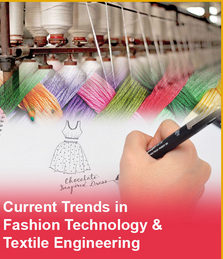Journal of Fashion Technology - Juniper publishers Abstract Eco-friendly plasma pretreatment can be introduced on any fabric to enhance the surface properties and adhesion of Graphene Oxide (GO) in order to fabricate electronic smart textile. Next generation fashion technology is bound to offer comfort level in all wearable cloths, be it is related to health, defense or space technology sector. Keywords: Smart textile; Plasma technology; Graphene; Adhesion Abbreviations: GO: Graphene Oxide; DBD: Dielectric Barrier Discharge; DLC: Diamond-Like Carbon Go to Introduction Recently the electro conductive textiles are gaining a lot of attention due to its low cost, availability, light weight, flexibility, and wearer comfort. However, conductivity is required to transfer the electrical signals to or from textile materials. The textile material which exhibits electrical conductivity is called electronic-textiles (e-textiles). Various methods are availa...





